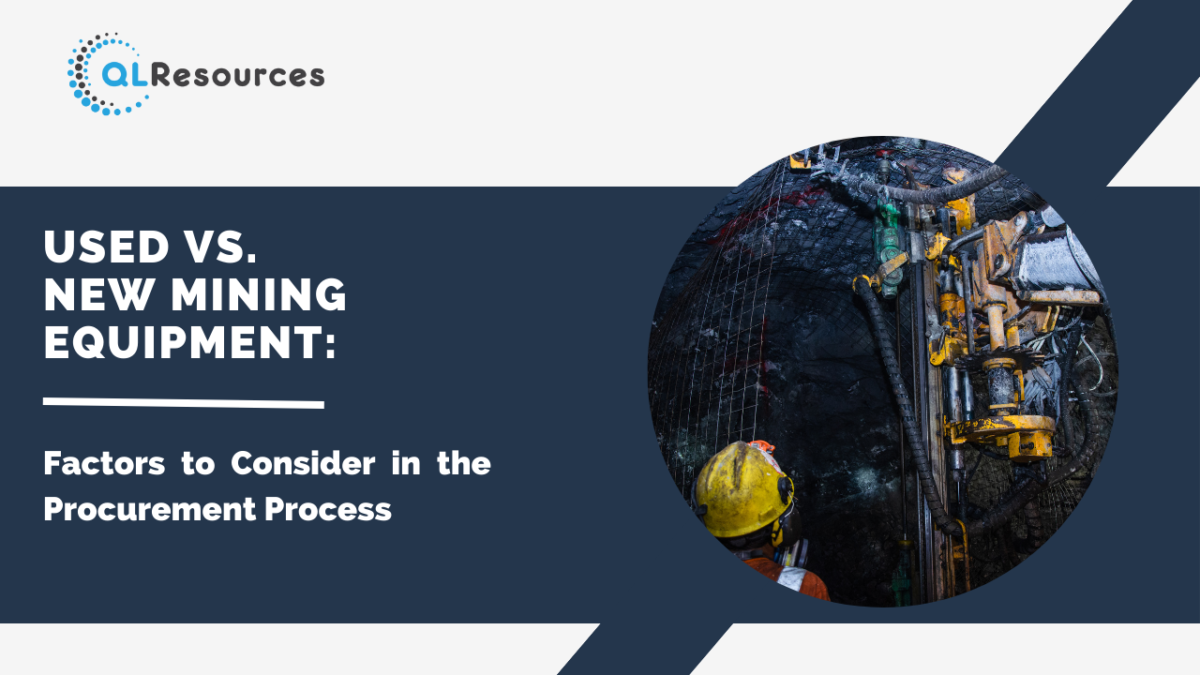When it comes to acquiring mining equipment, companies often face the decision of whether to purchase new equipment or opt for used machinery. Both options have their advantages and considerations that need to be carefully evaluated. In this blog post, we will explore the factors that mining companies should consider in the procurement process when deciding between used and new mining equipment.
Equipment Condition and Performance:
One of the key considerations is the condition and performance of the equipment. New equipment is typically in pristine condition, offering optimal performance and minimal risk of breakdowns. On the other hand, used equipment may have varying levels of wear and tear, which can impact its efficiency and reliability. It is important to thoroughly inspect and assess the condition of used equipment to ensure it meets the required standards and will perform adequately for the intended mining operations.
Equipment Lifecycle and Longevity:
New equipment generally has a longer expected lifecycle compared to used equipment. The wear and tear on used equipment, as well as advancements in technology, can affect its remaining lifespan. It is crucial to consider the projected lifespan of the equipment and assess whether it aligns with the company’s long-term operational goals. New equipment often comes with warranties and guarantees, providing assurance of its durability and longevity.
Initial Cost and Budget:
The initial cost of used equipment is generally lower than that of new equipment. This cost advantage can be significant, especially for companies with budget constraints or those looking for short-term solutions. However, it is important to consider the overall cost of ownership, including maintenance, repairs, and potential downtime, when assessing the value proposition of used equipment. New equipment may require a higher initial investment, but it can offer better reliability and lower maintenance costs over time.
Technological Advancements and Efficiency:
New mining equipment often incorporates the latest technological advancements, which can result in improved efficiency, productivity, and safety. Advanced features and automation capabilities can streamline mining operations, reduce fuel consumption, and enhance overall performance. When evaluating equipment options, consider the impact of technological advancements on operational efficiency and assess whether the potential gains justify the investment in new equipment.
Availability and Lead Time:
Used equipment may be readily available for immediate purchase, whereas new equipment might have longer lead times due to manufacturing and delivery processes. Consider the urgency of equipment acquisition and the potential impact on project timelines. It is important to balance the availability of used equipment with the specific requirements and timelines of the mining operations.
Maintenance and Support:
Consider the availability of spare parts, maintenance support, and service networks for both new and used equipment. New equipment often benefits from manufacturer support and readily available parts. Used equipment may require more extensive research and sourcing to ensure ongoing maintenance and support options are available. Evaluate the availability of maintenance resources and consider the potential impact on downtime and operational efficiency.
Conclusion:
The decision to choose between used and new mining equipment requires careful evaluation of several factors. While used equipment may offer cost advantages, companies must assess the equipment’s condition, remaining lifespan, and overall value proposition. New equipment, although requiring a higher initial investment, provides assurance of performance, longevity, and access to the latest technological advancements. Consider the specific needs, budget, timeline, and operational goals of the mining company to make an informed decision. By thoroughly assessing these factors, mining companies can select the most suitable equipment option that aligns with their requirements and maximises operational efficiency and productivity.
